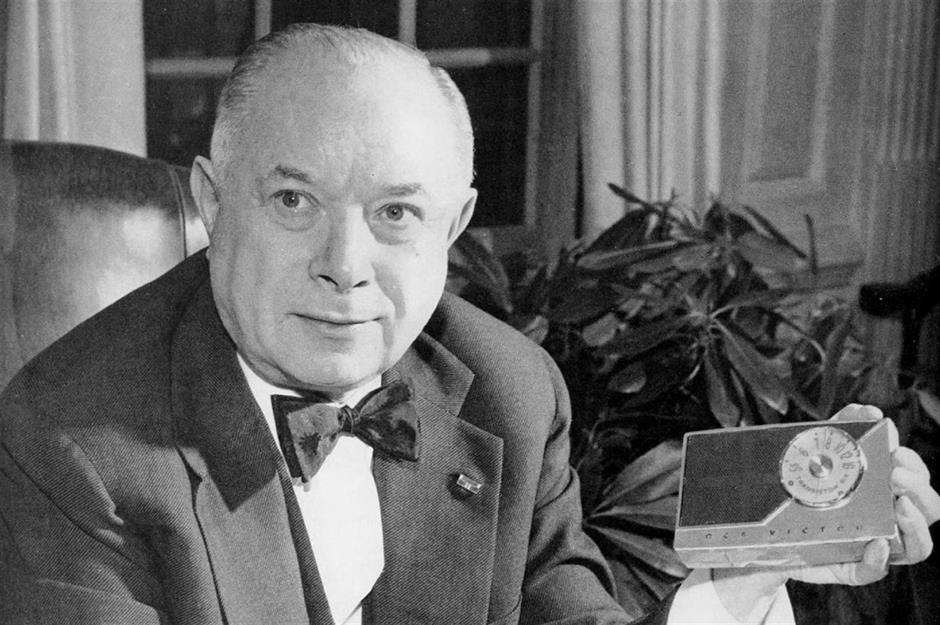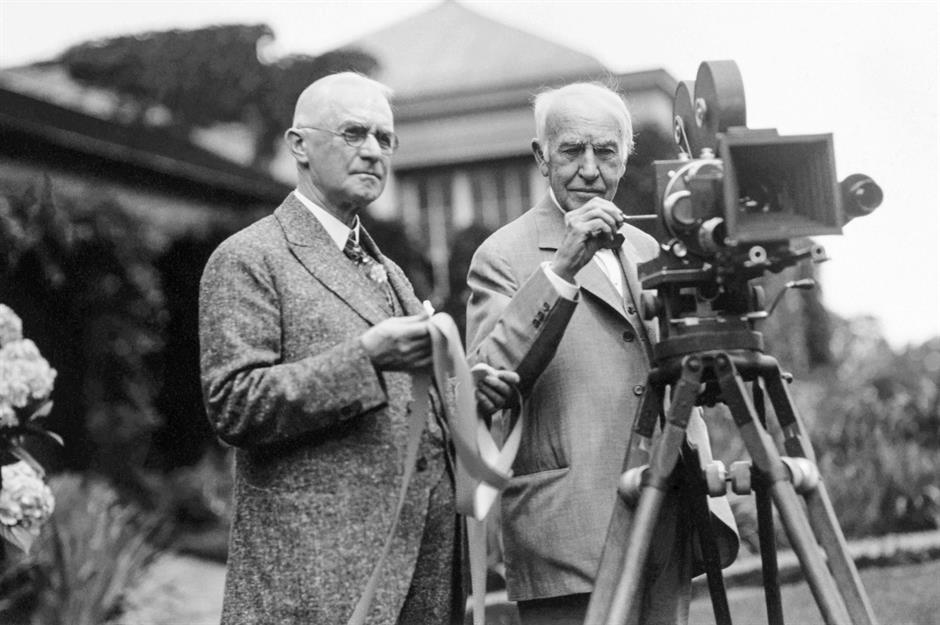Little-known innovators who changed the world
The innovators who changed life as we know it
Society has developed dramatically in the past 150 years, with groundbreaking innovations and globally influential companies shaping the way we live today. However, some of the people behind the products and services we take for granted have flown firmly under the radar.
From the inventor of the Bic pen to the woman who gave the world Barbie dolls, read on to discover the little-known entrepreneurs and innovators who played their part in changing the world.
All dollar amounts in US dollars
George Eastman
When George Eastman (right) founded Kodak in 1888, photography was a niche pastime for the rich. His company's development of roll film brought photography to the masses and was instrumental in the invention of motion picture film. According to estimates from Forbes, Eastman was worth $50 million in 1918, the equivalent of over $1 billion (£763m) in 2024.
The inventor is pictured here with Thomas Edison (left), who's widely credited with inventing the light bulb.
Madam C. J. Walker
Considered the "first Black woman millionaire in America", Madam C. J. Walker created a line of haircare products for Black women after her own experiences with a scalp ailment that caused hair loss.
Her line of products were part of the "Walker System" of haircare, which she sold directly to Black women. She quickly gained a loyal following and the success of her business allowed her to accumulate significant wealth before she died in 1919.
David Sarnoff
Radio and TV pioneer David Sarnoff saw the potential of radio as a device for broadcasting to the masses. At the time, the technology was being used to communicate information from one individual to another.
The prescient entrepreneur went on to develop America's first national radio network, the Radio Corporation of America (RCA).
Olive Ann Beech
American businesswoman Olive Ann Beech was often referred to as the "first lady of aviation" for her impact on the male-dominated airline industry. She co-founded Beech Aircraft Corporation with her husband Walter Beech in 1932, and played a key role in the company's growth during World War II.
When her husband died in 1950, Olive became president and chairman of the company. Over the next 18 years, she catapulted the company to success by launching several aircraft models that saw Beech Aircraft Corporation become an industry leader.
Frederick McKinley Jones
The first African-American to be awarded the National Medal of Technology, Frederick McKinley Jones invented a method of mobile refrigeration which consisted of a small compressor unit attached to delivery trucks allowing perishable foods to be transported over long distances.
Prior to Jones' invention in 1938, salt and ice were used, an unreliable method that often led to food spoiling before it reached its destination. Jones co-founded the Thermo King Corporation, which produced the mobile refrigeration unit. The business expanded globally and was clocking up annual sales in the region of $1 billion when it was sold in 1997, the equivalent of almost $2 billion (£1.5bn) in today's money.
Ray Kroc
Brothers Maurice and Richard McDonald launched the first McDonald's restaurant in 1948. However, appliance salesman Ray Kroc turned the business into an international fast food chain. He began a franchise programme for the brothers and eventually bought them out in 1961.
When Kroc died in 1984 aged 81, his net worth was estimated to be around $500 million, the equivalent of over $1.5 billion (£1.1bn) in 2024 money. McDonald's now boasts over 40,000 restaurants worldwide in more than 100 countries.
Jerome Lemelson
One of the most influential entrepreneurs you've probably never heard of, inventor and businessman Jerome Lemelson was the originator or co-creator of all sorts of game-changing technologies, from cordless phones, fax machines, and camcorders, to automated warehouses and industrial robots.
Throughout his lifetime, he gained more than 600 patents. In 1992, five years before his death, he founded The Lemelson Foundation with his wife Dorothy, with the aim of inspiring a new generation of inventors.
Joseph Woodland and Bernard Silver
Joseph Woodland and Bernard Silver transformed howy we shop by inventing the barcode scanning system, which is now used in just about every store in the world. They patented the idea in 1952 and are said to have sold it to electronics company Philco for $15,000. In today's money, that's around $178,000 (£136k), a tiny sum in comparison to its influence.
Silver died in 1963, while Woodland died in 2012.
Baron Marcel Bich
Baron Marcel Bich started his company in 1953 after he bought the patent rights to the ballpoint pen created by Hungarian Ladislas Biro. The cheap Societe Bic pens flew out of shops and quickly became an international hit.
Bich then added disposable razors and lighters to his product line. Societe Bic went public and later added other companies to the group. A keen sailor, Bich attempted many times to win the America's Cup. He died in 1994 at the age of 79. His exact net worth was not made public, but he was widely considered to be a multi-millionaire.
Ole Kirk Kristiansen
Danish carpenter Ole Kirk Kristiansen invented one of the world's most loved, enduring, and creative toys: LEGO. While The LEGO company was founded in 1932, the LEGO brick in its current plastic interlocking form was launched in 1958, the same year that Ole died.
His son took over the business, and the family still owns a 75% stake in the firm, which has since expanded into theme parks, hotels, and movies. It also has a stake in theme park operator Merlin Entertainments.
Dan and Frank Carney
Brothers Dan and Frank Carney opened the world's first Pizza Hut in Wichita, Kansas in 1958 after their mother loaned them $600, around $6,500 (£4.9k) in 2024 money. Run as a franchise business, it went international in 1970 and eventually became the largest pizza restaurant chain in the world.
The brothers sold their business to PepsiCo in 1977. It's unknown how much they made from the deal in cash or shares, but after three years on the board at PepsiCo, Frank (pictured here on the right) went on to become a franchisee at rival pizza chain Papa John's, running more than 120 outlets.
Ruth Handler
Ruth Handler is credited with creating the Barbie doll, which has become one of the most influential and successful toys ever. After her husband, Elliott Handler, founded the Mattel company in 1945, along with business partner Harold Matson, Ruth quickly assumed a key role in the firm, particularly after identifying a huge gap in the market.
One day, when watching her daughter play with paper dolls, Ruth realised that there was a distinct lack of dolls that resembled adults. When it rolled out in 1959, Barbie catapulted the company to success, selling 300,000 dolls in its first year of release. In 2009, Forbes estimated that one billion Barbie dolls had been sold since they first came to market.
Marie Van Brittan Brown and Albert Brown
Concerned by the high levels of property crime in her New York City neighbourhood, Marie Van Brittan Brown, who was working as a nurse at the time, pretty much created the multibillion-dollar home security industry. In 1966, along with her husband Albert Brown, she invented the world's first CCTV home security system.
The couple were granted a patent in 1969 and went on to win numerous awards for the innovation.
Anita Roddick
Anita Roddick launched The Body Shop in Brighton, England in 1976. Roddick pioneered the idea of selling ethical beauty products that were not tested on animals. Rapid expansion followed, and at the height of its success there were over 3,000 Body Shop stores in more than 70 countries.
In 2006, Roddick sold The Body Shop to L'Oréal for a reported $915 million, the equivalent of over $1.4 billion (£1.1bn) today. She died in 2007 at the age of 64.
John Mackey
Whole Foods has now become a household name thanks to founder John Mackey. One of the most influential advocates in the movement for organic food, the entrepreneur set up his first health food store in 1978. It went on to become a worldwide business.
Whole Foods was also the first grocery chain to set standards for the humane treatment of animals. Amazon bought the business for $13.4 billion (£10.3bn) in 2017, the equivalent of over $17 billion (£13bn) in today's money.
Nobutoshi Kihara
Nobutoshi Kihara was a Japanese engineer who worked at Sony. He developed Japan’s first cassette recorder and the Betamax video recorder but is most famous for creating the Sony Walkman, which launched in 1979.
This personal stereo system transformed the way people listened to music and became an instant worldwide hit. Kihara remained a Sony employee for his entire career, though it's not known how well he was rewarded for his innovations. He died in 2011 aged 84.
Patricia Bath
Born in Harlem, ophthalmologist Patricia Bath worked tirelessly to invent a laser cataract removal device called the Laserphaco Probe, which she patented in 1988.
Bath, who died in 2019, was passionate about tackling loss of vision and other eye problems in the Black community. The entrepreneur also co-founded the American Institute for the Prevention of Blindness.
Marc Andreessen and Eric Bina
In 1992, students Marc Andreessen (pictured) and Eric Bina began developing a web browser called Mosaic. It's widely recognised as one of the world's first web browsers and has forever changed the face of online technology.
After releasing the first version in February 1993, the browser gained popularity due to its strong support of multimedia and quick response to user bug reports. In 1994, the company joined forces with the former CEO of Silicon Graphics, James H Clark, to form the company Netscape.
Wim Ouboter
In 1998, realising that there was a need for a form of transport for journeys that were too far to walk but not far enough to drive, Swiss-born Wim Ouboter created the first aluminium-folding scooter.
After a rocky start, Ouboter's microscooter is now sold in eighty countries worldwide, and the range has expanded to include models for all ages.
Now discover 20 genius inventions that were ridiculed at the time
Updated by Alice Cattley

